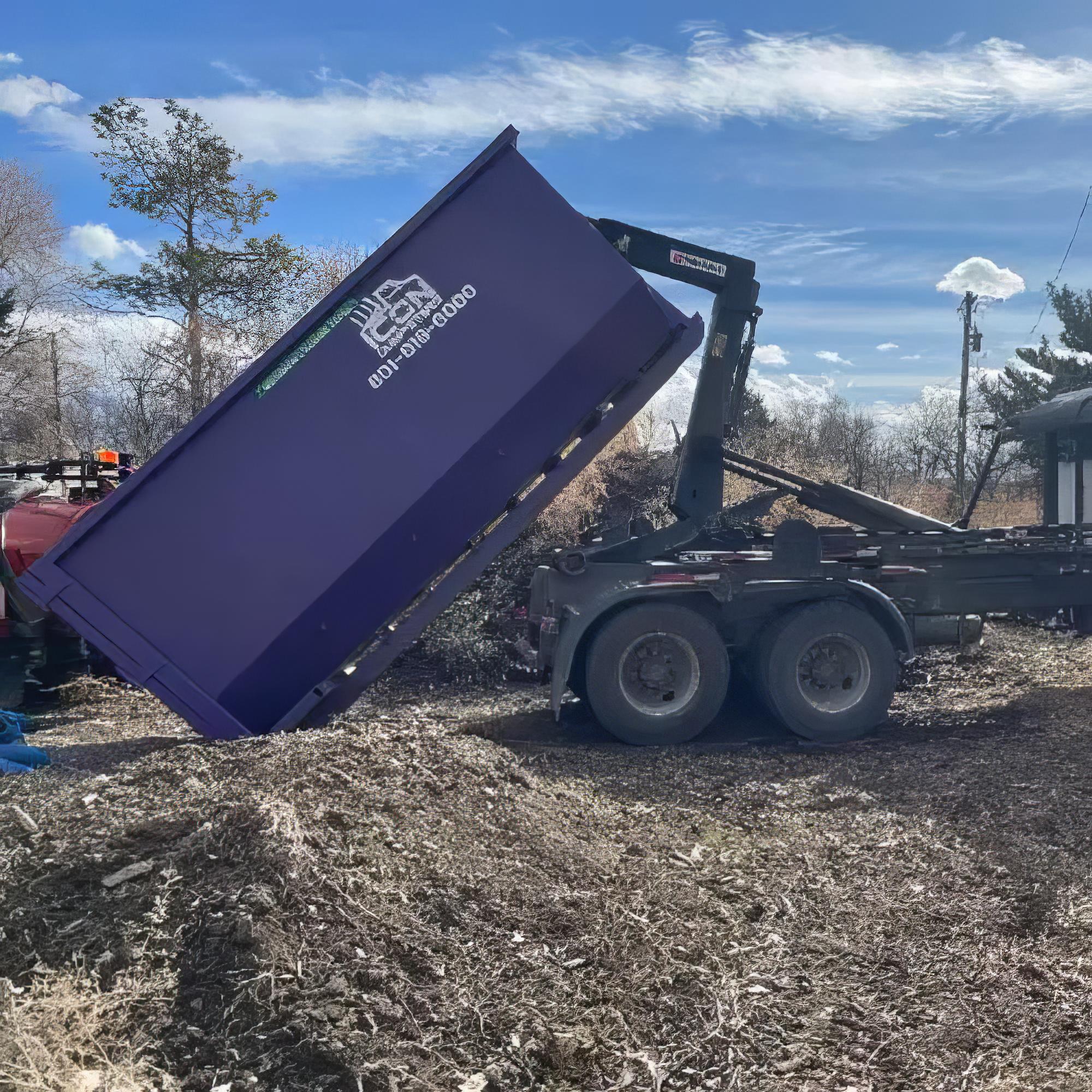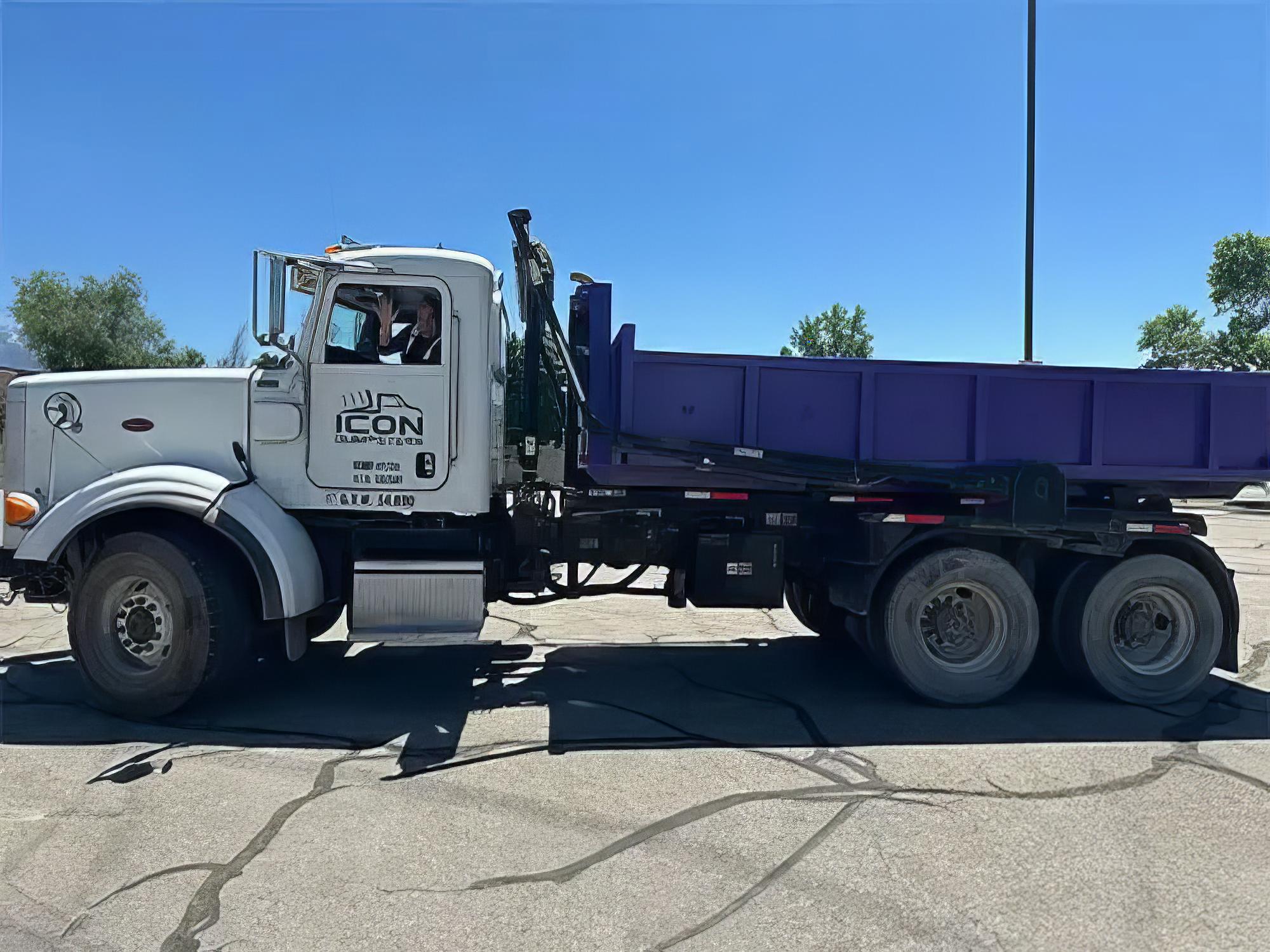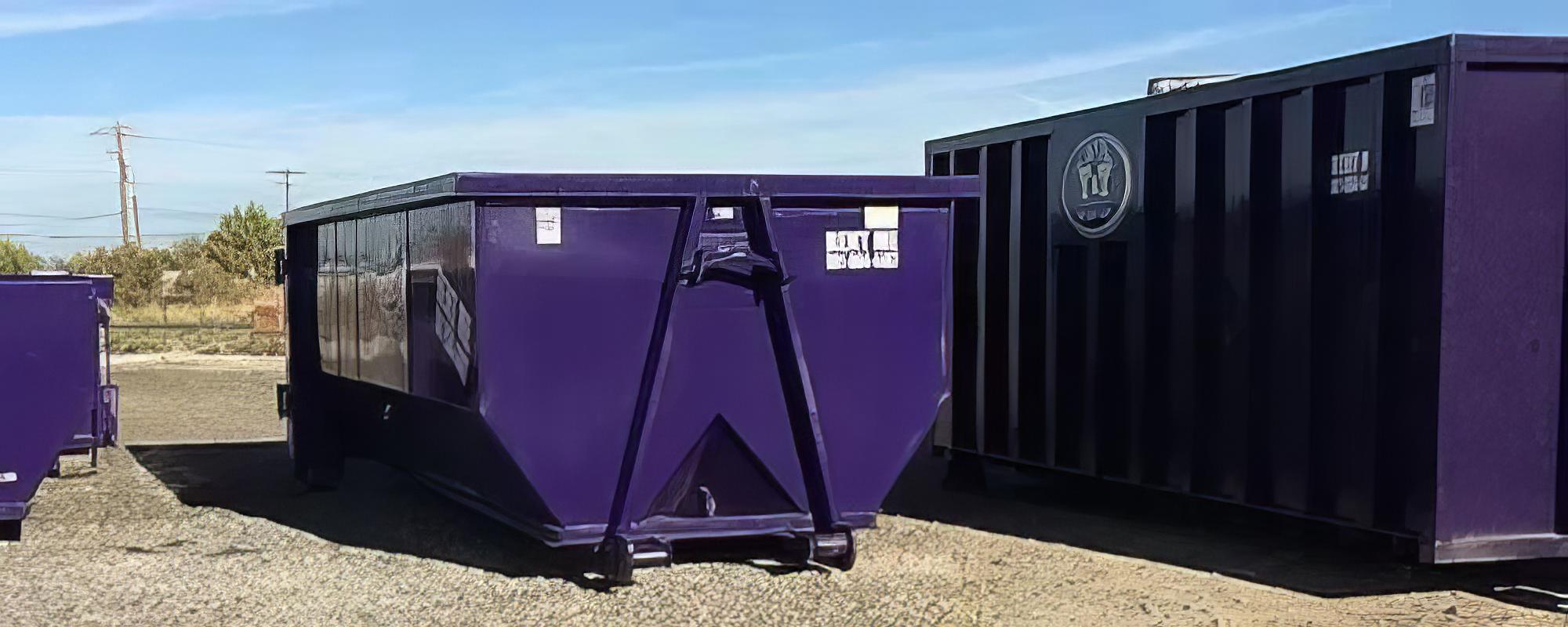Construction Waste Management: Best Practices for 2025
Learn proven strategies for managing construction waste efficiently. From sorting materials to choosing the right dumpster size, discover how to minimize costs and environmental impact while maintaining project timelines.

Introduction to Construction Waste Management
Construction projects generate significant amounts of waste, and proper management is crucial for project success, cost control, and environmental compliance. In 2025, construction waste management has evolved beyond simple disposal to include sophisticated sorting, recycling, and sustainability practices.
This comprehensive guide explores the latest strategies and technologies for effective construction waste management. Whether you're a project manager, contractor, or site supervisor, these insights will help you implement waste management practices that save money and protect the environment.

From small renovation projects to large commercial construction sites, proper waste management strategies can make a significant difference in project success and environmental impact.
Understanding Construction Waste Types
Construction waste can be categorized into several types, each requiring different handling and disposal methods. Understanding these categories helps in planning efficient waste management strategies and choosing the right disposal solutions.

Inert Waste
- Concrete and masonry: Bricks, concrete blocks, tiles, stone
- Soil and earth: Excavated soil, rock, gravel
- Ceramic materials: Porcelain, ceramic tiles, sanitary ware

Non-Hazardous Waste
- Wood and lumber: Untreated wood, pallets, packaging
- Metal: Steel, aluminum, copper, brass
- Plastic: Pipes, packaging, insulation materials

Hazardous Waste
Some construction waste requires special handling due to environmental or health concerns. Proper identification and disposal of these materials is crucial for compliance and safety.
- Asbestos-containing materials: Insulation, ceiling tiles, floor coverings
- Lead-based paint: Old paint, contaminated dust
- Chemical waste: Solvents, adhesives, sealants
Important Note
Proper classification of waste types is essential for compliance and cost management. Hazardous materials require special handling and disposal procedures that can significantly impact project costs.
Waste Management Planning
Effective construction waste management starts with comprehensive planning before the project begins. A well-designed waste management plan can reduce costs by 20-30% and improve project efficiency while ensuring regulatory compliance.

Pre-Construction Assessment
- •Site evaluation: Assess existing conditions and potential waste generation
- •Material inventory: Identify materials that can be salvaged or recycled
- •Waste estimation: Calculate expected waste volumes by material type
- •Regulatory review: Understand local waste disposal requirements
Waste Management Plan Components
- 1Waste hierarchy: Reduce, reuse, recycle, dispose
- 2Sorting strategy: On-site separation and collection methods
- 3Equipment needs: Dumpsters, compactors, sorting containers
- 4Staff training: Waste handling procedures and safety protocols
- 5Monitoring systems: Waste tracking and reporting mechanisms
On-Site Waste Sorting Strategies
On-site sorting is the foundation of effective construction waste management. Proper sorting increases recycling rates, reduces disposal costs, and improves project sustainability while creating a cleaner, safer work environment.
Sorting Station Setup
- •Designated areas: Separate zones for different waste types with clear boundaries
- •Clear signage: Visual indicators and color coding for each waste category
- •Container system: Color-coded bins and dumpsters for easy identification
- •Accessibility: Easy access for workers and equipment with proper lighting
Sorting Categories
Primary Materials
- Metals: Steel, aluminum, copper, brass, stainless steel
- Wood: Untreated lumber, pallets, packaging, trim
- Concrete: Broken concrete, masonry, tiles
Secondary Materials
- Plastics: Pipes, packaging, insulation, vinyl
- Cardboard: Packaging, boxes, paper products
- Mixed waste: Non-recyclable materials
Dumpster Selection and Optimization
Choosing the right dumpster size and configuration is critical for efficient waste management. The wrong choice can lead to increased costs, project delays, and inefficient operations that impact your bottom line.
Size Selection Factors
- •Project scope: Total waste volume and material types
- •Project timeline: Duration and waste generation rate
- •Site constraints: Available space and access limitations
- •Budget considerations: Rental costs vs. multiple pickups
Dumpster Configuration Options
Single Large Dumpster
- Cost-effective for high-volume projects
- Simplified logistics and management
- Better for projects with consistent waste generation
Multiple Smaller Dumpsters
- Better for sorting and organization
- Easier access and management
- Flexible pickup scheduling
Recycling and Reuse Strategies
Modern construction waste management emphasizes recycling and reuse over disposal. These strategies not only reduce environmental impact but also provide cost savings and potential revenue streams that can improve project profitability.
♻️ Material Reuse Opportunities
- Salvaged materials: Doors, windows, fixtures, hardware
- Reclaimed lumber: Structural beams, flooring, trim
- Metal components: Steel beams, pipes, electrical conduit
- Masonry materials: Bricks, stone, concrete blocks
🔄 Recycling Programs
- Metal recycling: High-value materials with established markets
- Wood recycling: Mulch, particle board, biomass fuel
- Concrete recycling: Aggregate for new construction
- Plastic recycling: New products and packaging materials
Revenue Opportunity
Many construction materials have significant resale value. Consider establishing partnerships with salvage yards and recycling facilities to turn waste into revenue streams.
Cost Management and Optimization
Effective waste management can significantly impact project costs. Understanding cost factors and implementing optimization strategies can lead to substantial savings that improve project profitability.
Cost Components
- •Dumpster rental: Daily or weekly rental fees
- •Transportation: Delivery and pickup charges
- •Disposal fees: Per-ton charges at waste facilities
- •Labor costs: Staff time for sorting and management
- •Permit fees: Local regulatory requirements
Cost Reduction Strategies
- •Volume optimization: Compact waste to reduce pickup frequency
- •Material recovery: Sell or donate reusable materials
- •Bulk pricing: Negotiate rates for large volumes
- •Efficient scheduling: Coordinate pickups with project phases
- •Waste prevention: Minimize material waste through better planning
Environmental Compliance and Regulations
Construction waste management is subject to various environmental regulations at local, state, and federal levels. Compliance is essential to avoid fines and project delays that could significantly impact your project timeline and budget.
Key Regulatory Areas
- •Waste classification: Proper identification of hazardous materials
- •Transportation requirements: Licensed haulers and proper documentation
- •Disposal facility standards: Approved facilities for different waste types
- •Reporting requirements: Waste tracking and documentation
- •Permit requirements: Local permits for waste storage and handling
Compliance Best Practices
- •Maintain detailed waste manifests and tracking records
- •Train staff on regulatory requirements and procedures
- •Conduct regular compliance audits and inspections
- •Establish relationships with approved disposal facilities
- •Stay updated on changing regulations and requirements
Technology and Innovation in Waste Management
The construction industry is embracing new technologies to improve waste management efficiency and sustainability. These innovations are transforming how construction waste is handled and can provide competitive advantages for forward-thinking companies.
Digital Solutions
- Waste tracking apps: Real-time monitoring and reporting
- IoT sensors: Fill level monitoring and optimization
- Data analytics: Waste pattern analysis and optimization
- Mobile platforms: On-site waste management coordination
Advanced Processing Technologies
- Automated sorting: AI-powered material identification
- Advanced recycling: New methods for difficult materials
- Waste-to-energy: Converting waste to usable energy
- 3D printing: Using recycled materials for new components
Technology Investment
While technology solutions require upfront investment, they often provide significant returns through improved efficiency, reduced costs, and enhanced compliance capabilities.
Safety Considerations
Construction waste management involves various safety hazards that must be addressed through proper training, equipment, and procedures. Prioritizing safety prevents accidents and protects your workforce while maintaining project momentum.
Common Hazards
- Sharp materials: Metal edges, broken glass, nails
- Heavy objects: Concrete blocks, steel beams, equipment
- Chemical exposure: Hazardous materials and dust
- Equipment operation: Dumpster loading and transportation
Safety Protocols
- Provide appropriate personal protective equipment (PPE)
- Train workers on proper lifting and handling techniques
- Establish clear procedures for hazardous material handling
- Maintain clean and organized work areas
- Conduct regular safety inspections and training
Measuring Success and Continuous Improvement
Effective waste management requires ongoing monitoring and improvement. Establishing metrics and review processes helps optimize performance over time and ensures your waste management strategy remains effective and cost-efficient.
Key Performance Indicators
- •Waste diversion rate: Percentage of waste recycled or reused
- •Cost per ton: Total waste management costs divided by waste volume
- •Pickup frequency: Number of dumpster pickups per project phase
- •Compliance rate: Percentage of regulatory requirements met
- •Staff efficiency: Time spent on waste management activities
Improvement Strategies
- •Regular review of waste management performance
- •Benchmarking against industry standards
- •Staff feedback and training programs
- •Technology adoption and process optimization
- •Partnership development with recycling facilities
Conclusion
Construction waste management in 2025 requires a comprehensive approach that balances efficiency, cost-effectiveness, and environmental responsibility. By implementing the strategies outlined in this guide, construction professionals can significantly improve their waste management practices while reducing costs and environmental impact.
The key to success lies in proper planning, effective implementation, and continuous improvement. With the right approach, construction waste management can become a competitive advantage rather than a project burden, contributing to both environmental sustainability and project profitability.
Key Takeaways
- • Develop comprehensive waste management plans before project start
- • Implement effective on-site sorting and organization systems
- • Choose appropriate dumpster sizes and configurations for your needs
- • Prioritize recycling and reuse opportunities to reduce costs
- • Stay compliant with environmental regulations and requirements
- • Continuously monitor performance and seek improvement opportunities
Need Help with Construction Waste Management?
Our team specializes in construction waste management and can help you optimize your waste disposal strategy. Get expert advice and competitive pricing for your project.